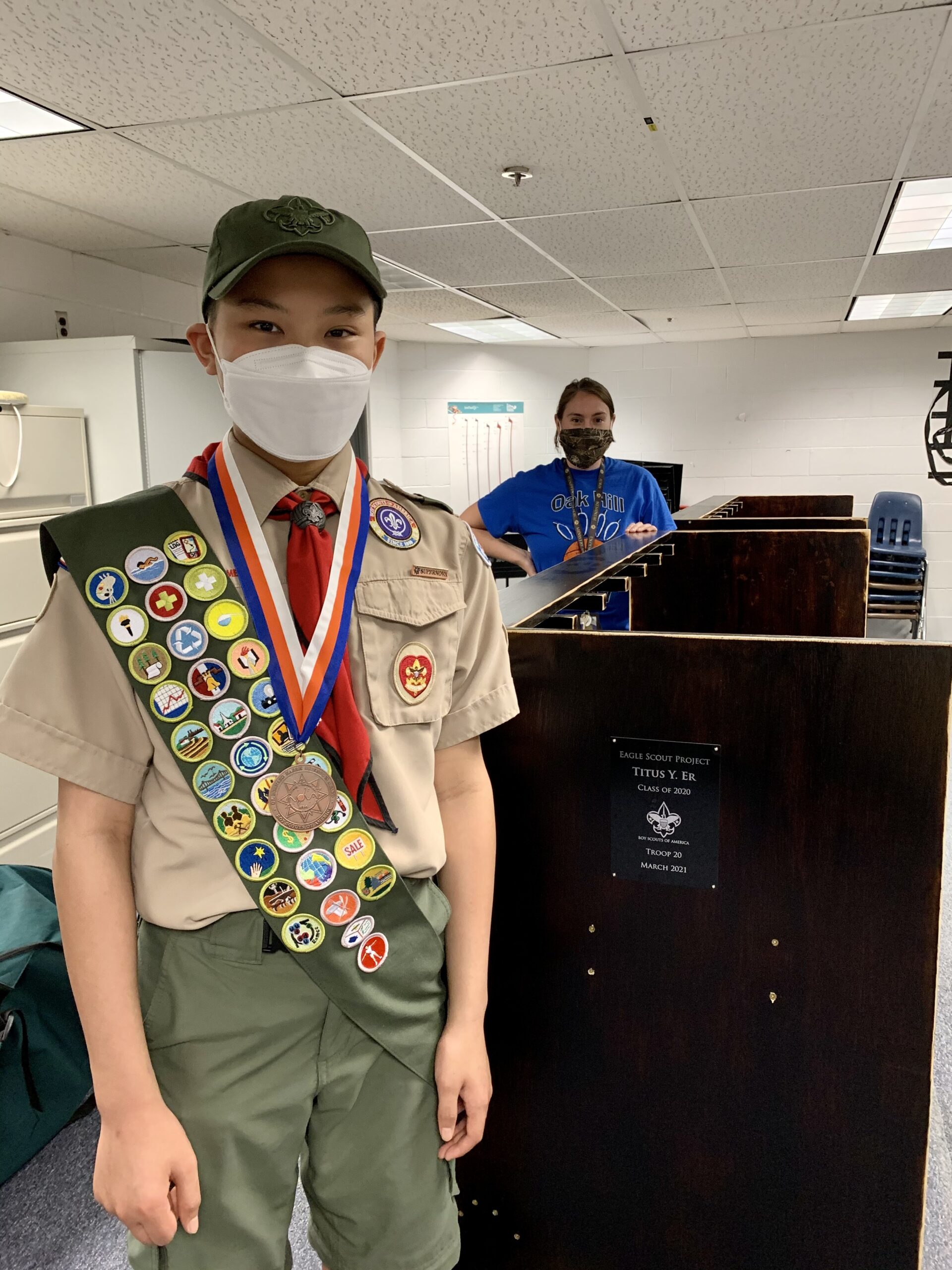Titus Er, Eagle Scout
Total Volunteer Hours Worked: 141
The service project I chose was building two violin and viola racks for my local elementary school. While I was a student in the elementary school orchestra, students placed their instruments on the floor. This opened a doorway to problems such other students stepping on the case or instrument which could break the instrument. To solve this problem, I led a group of volunteers to build two racks which provided dedicated space for students to store their instruments during their music lesson. Each rack can fit 13 cases, 26 in total. This is enough to have room for one 4th grade violin class.
After my project proposal was approved, I worked on the project plan and received donations from several HomeDepot stores, and immediate family members. I also approached a local wood mill store. However, due to the pandemic, the cost of the lumber was expensive so the manager could only give a minimal discounted price. On the bright side, while I was there, the manager gave many helpful suggestions. Many times, sponsors will not be able to offer you great deals, however, ask for advice on supplies for your project and learn how to approach the next sponsor better. After finishing my project plan, I created paper packets that volunteers would receive on the day of the project. These packets contain information on the schedule, 3d diagrams, and step-by-step instructions.
Observations and Challenges
The first phase of the project was sanding the wood. Despite volunteers arriving late, we finished earlier then schedule. Therefore, most volunteers went back to have lunch before resuming the second phase of the project. All the volunteers were very motivated and eager to work on the project. In fact, they even stayed longer than expected to help finish the project.
However we encountered many different challenges. Due to the lack of sunlight, the stain for the wood was slow to dry and I had to postpone the project date to another day. Moreover, one volunteer did not show up so the second phase of the project took longer than expected. The important lesson is to set aside at least one hour of leeway for possible complications. Volunteers can always leave early if the project is finished.
Changes (from original proposal)
Countering against my original proposal, I decided to exclude casters and handles on the violin rack in order to reduce the total cost. Without casters and handles, the racks avoided unnecessary movements which could impact the structure of the rack.
Another change was the change in work time of the project. The rack wood failed to stain overnight, so the second phase of the project had to be postponed. If your project includes staining wood, I would recommend leaving enough time between the first and second phase of the project.
During the project, the second phase was originally supposed to be a short session, however since we had less volunteers the process took a bit longer than planned. Again, leave enough leeway in projects to prepare for complications.
Leadership
For me, the most important leadership aspect of the project was knowing the project inside-out. It is important to prepare for complications and to be versatile when they come. Leaders are not able to lead if they are not knowledgable on what they are leading. Once you know how every layer of your project functions, responding to challenges will be significantly easier.
Furthermore, communication with your troop is vital to the attendance at a project. Because my project was during the pandemic, I had to set a limit on the amount of scouts attending, however, I wouuld highly recommend leaving space for more scouts then needed, in case some cannot attend last minute. I wished I had emphasized and presented my service project more to my troop prior to the start date. To improve attendance, talk to multiple individual members of your troop to show you care about their participation.
During my project, I had to question my plan and improve it amidst the different layers of the project. That was the most difficult part for me. If I were to do my project again, I would come up with a better fool-proof plan to support my project and mitigate problems.
After finishing the project I felt a great sense of accomplishment as a leader. Seeing the volunteers working hard and making progress on the racks was very rewarding. Finally, knowing the racks will ultimately be a place to store the violin cases for students in the long run gave a sense of satisfaction.







Oak Hill Elementary School Principal, Vice Principal, and Beneficiary Representative.
